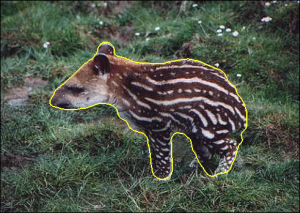Image Processing and Computer Graphics
Adam Kortylewski, Max Argus, Prof. Matthias Teschner|
Image Processing and Computer Graphics have impact not only in computer science but also in other research areas, such as biology or medicine. Image processing is important in robotics and many industrial applications. Much of modern machine learning has been developed on image data. Computer graphics dominates the movie theaters. This course gives a broad overview of these fields and introduces some basic techniques. It is highly recommended to take this course before attending other classes in computer vision or computer graphics. Consequently, if you think about specializing in these fields, you should take this course as early as possible. The exercises are intended to give you a better understanding of the most important techniques you learn in class. You are supposed to implement some selected methods in C/C++ and develop an intuition of their usage. The lecture for the Image Processing part is planned to be given in presence. Nonetheless, there is a good tradition to record the lecture, so that you can also participate remotely. The exercise sessions will be via an online meeting for everybody can participate, but also a room is reserved for that time, i.e., you can meet there to communicate with fellow students. You must be present for the exam. For details on the Computer Graphics part, please refer to the site of Prof. Teschner
|

|
Materials
Below you find all the slides, recordings, and exercise materials for this course. Note that the materials are being updated on the fly, so only the next upcoming classes will be up-to-date. Recordings are about 250MB each; some are much bigger due to videos. The German recordings are from few years ago and do not perfectly match the structure of the course anymore.| Date | Topic | Slides | Recordings | Exercises |
|---|---|---|---|---|
| 17.6. | Class 1: Introduction and image basics | Slides Class 1 | English | |
| 18.6. | Class 2: Noise, basic operators and filters | Slides Class 2 | English | German | 25.6. | Material | Solution | 24.6. | Class 3: Energy minimization | Slides Class 3 | English | German |
| 1.7. | Class 4: Variational methods | Slides Class 4 | English | German | |
| 2.7. | Class 5: Motion estimation | Slides Class 5 | English | German | 9.7. | Material | Solution |
| 8.7. | Class 6: Matching and local descriptors | Slides Class 6 | English | German | 23.7. | Material |
| 15.7. | Class 7: 3D reconstruction | Slides Class 7 | English | German | |
| 16.7. | Class 8: Recognition and Deep Learning | Slides Class 8 | ||
| 22.7. | Class 9: Segmentation | Slides Class 9 | English | German |
There is a forum for discussion, which will be available from June 16.


